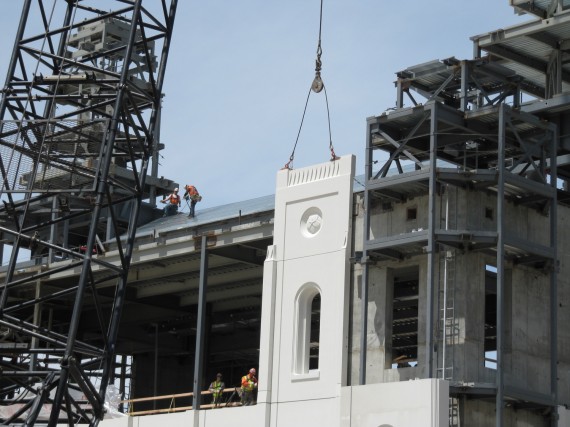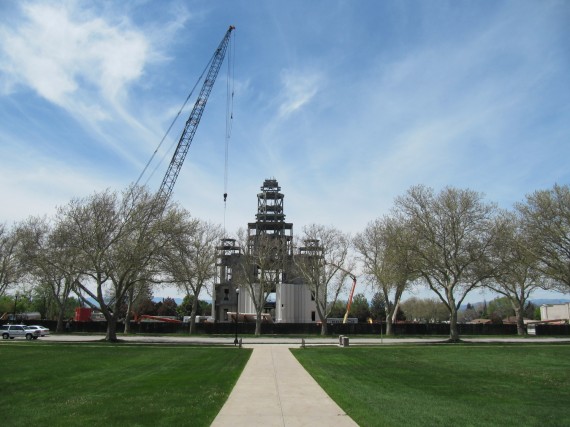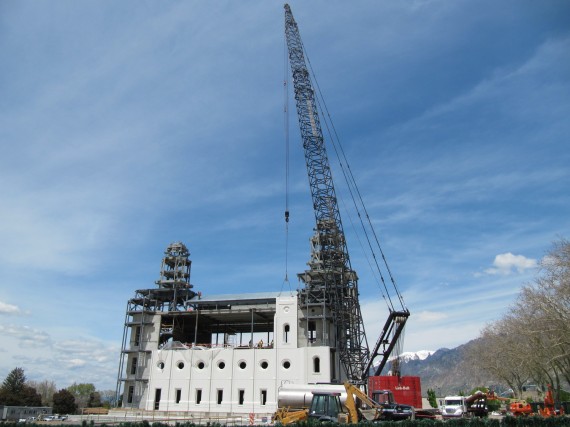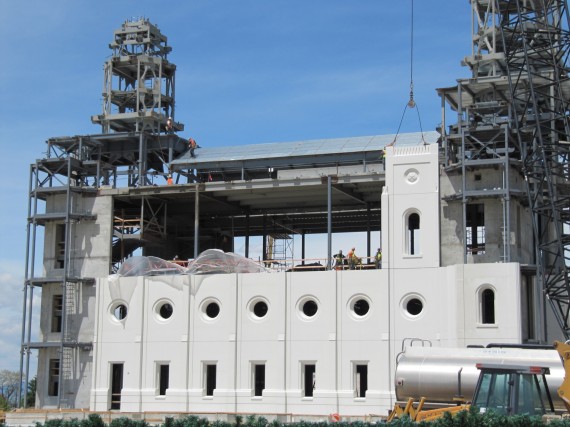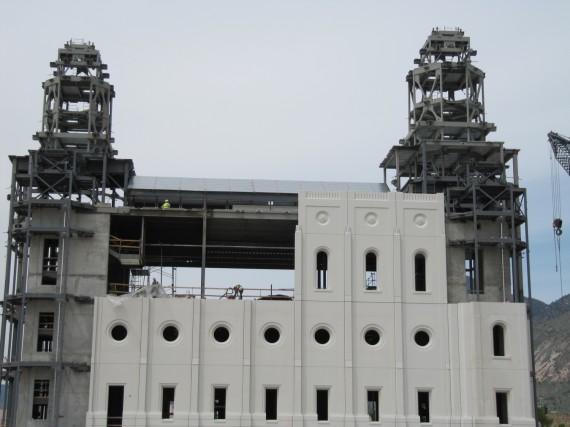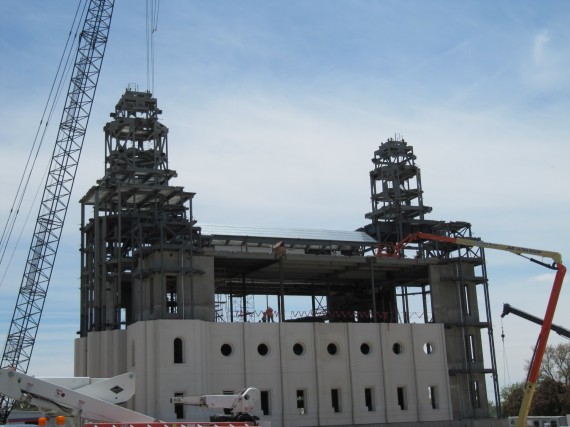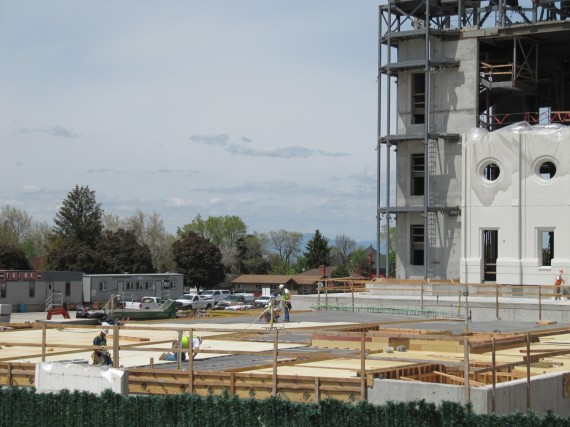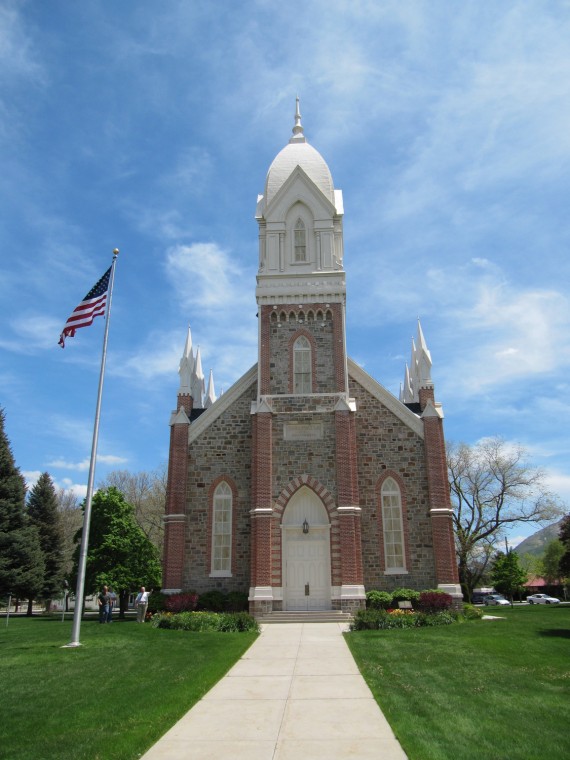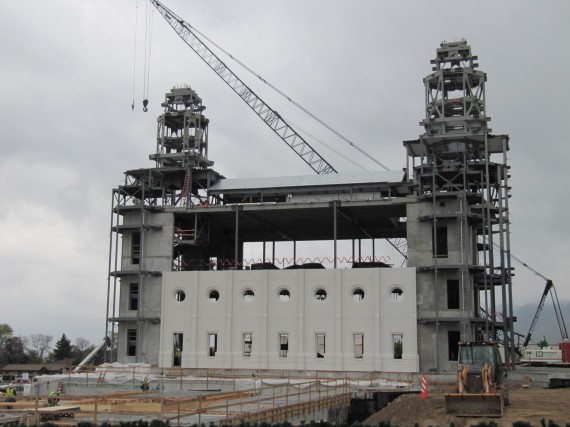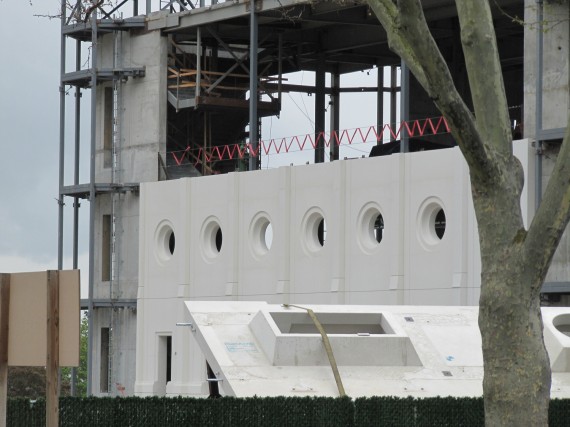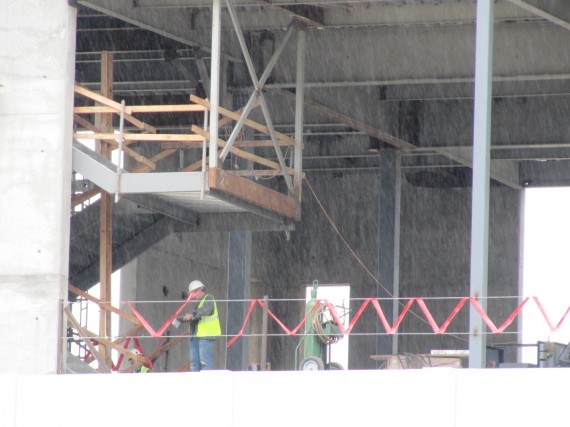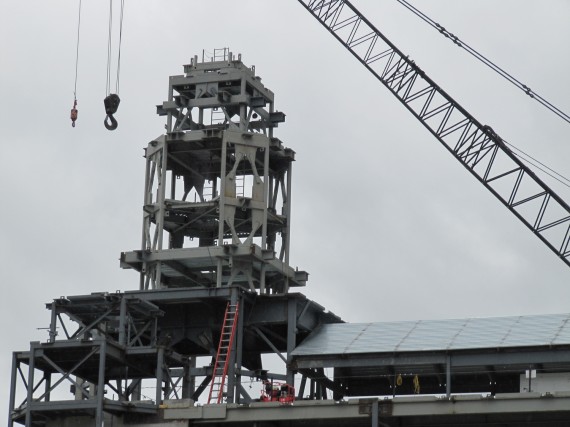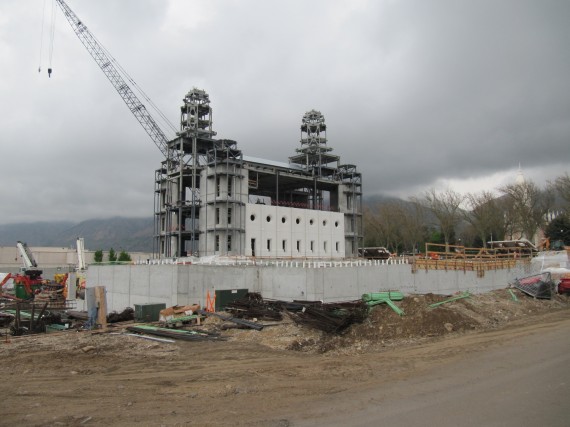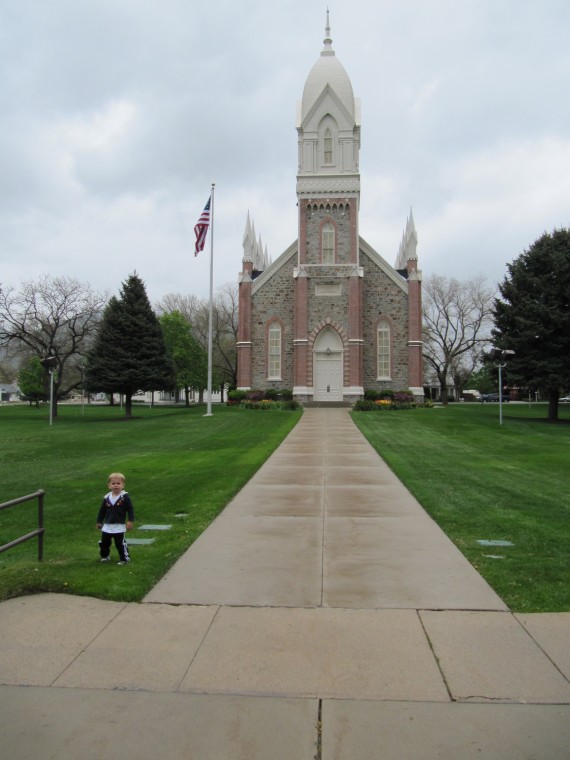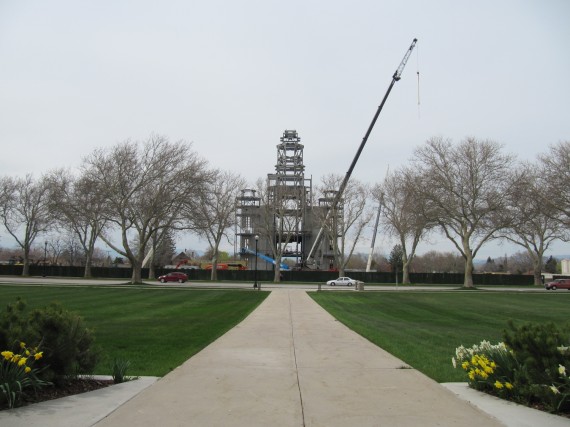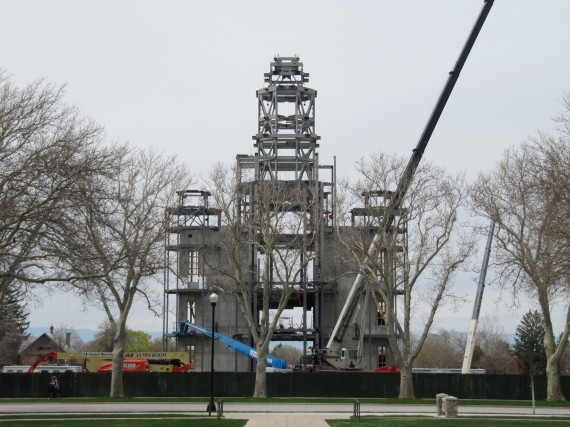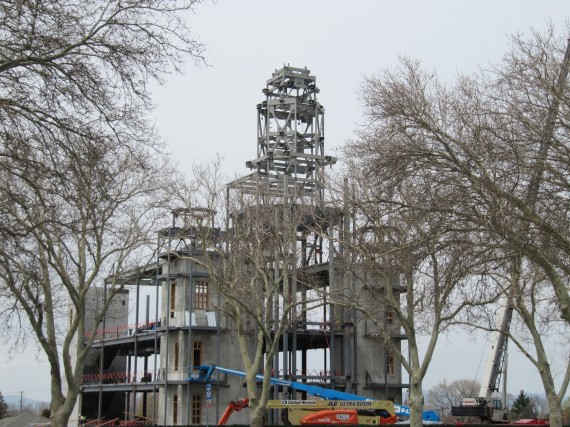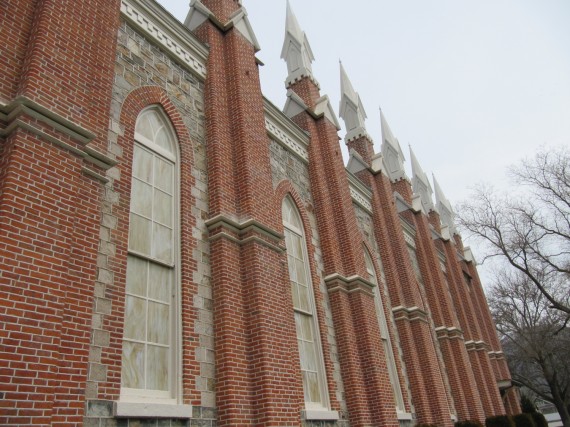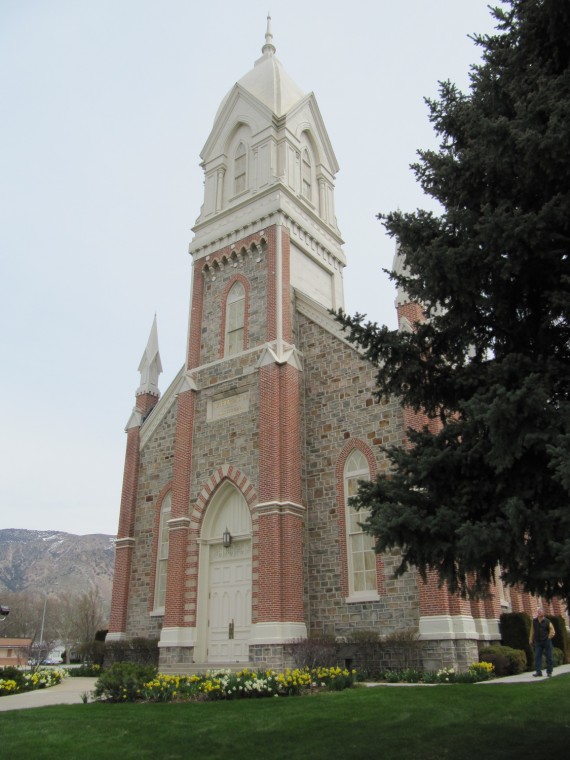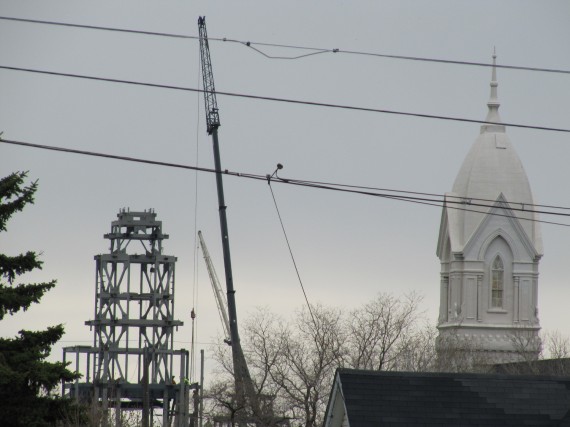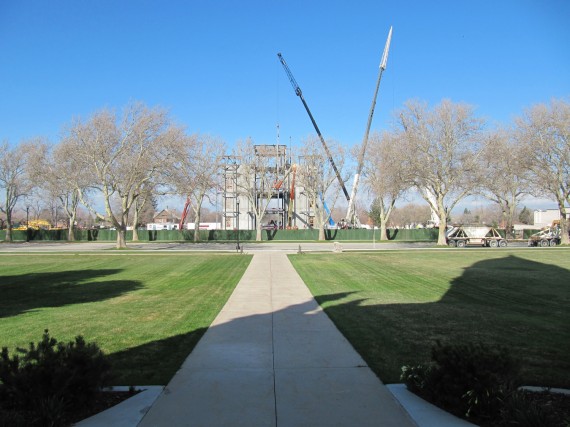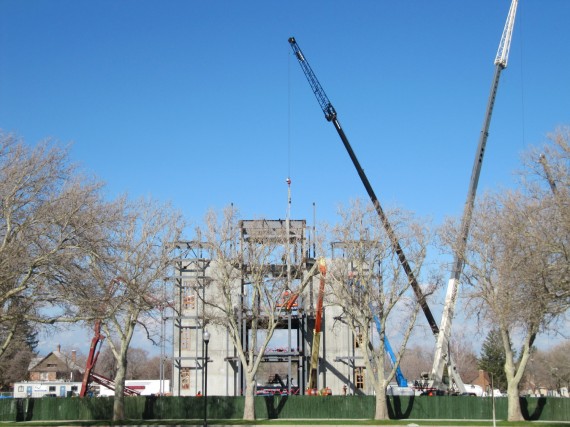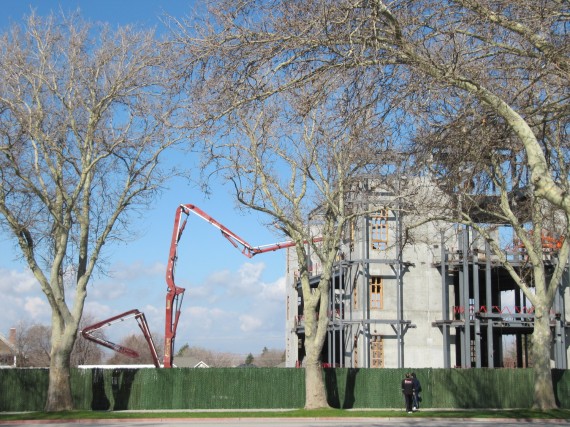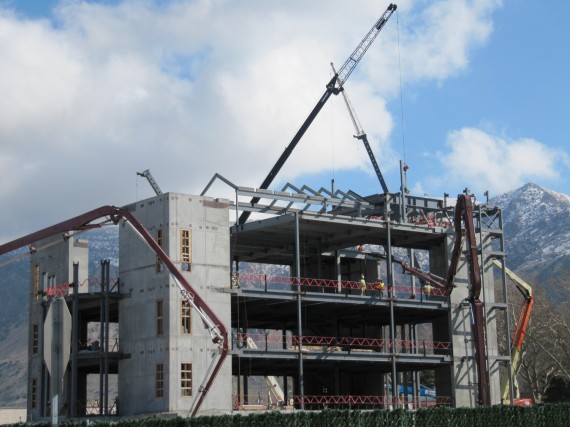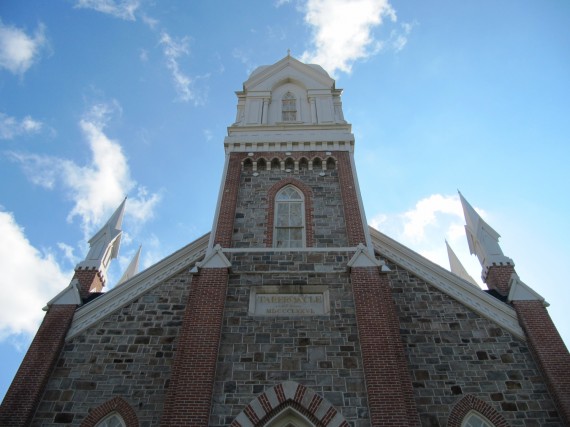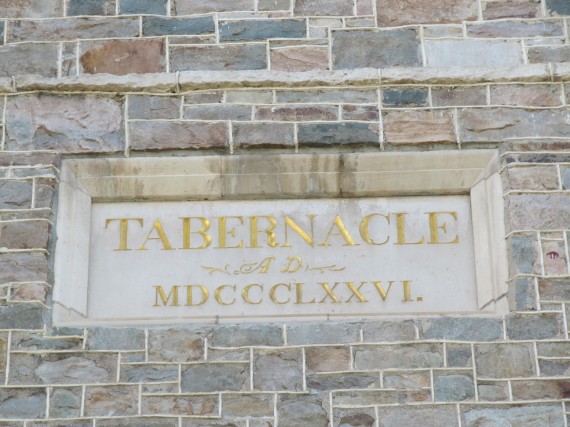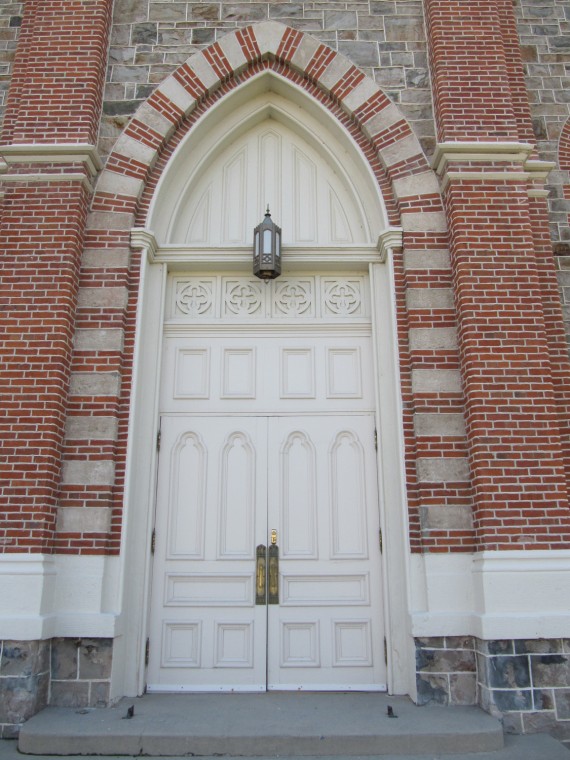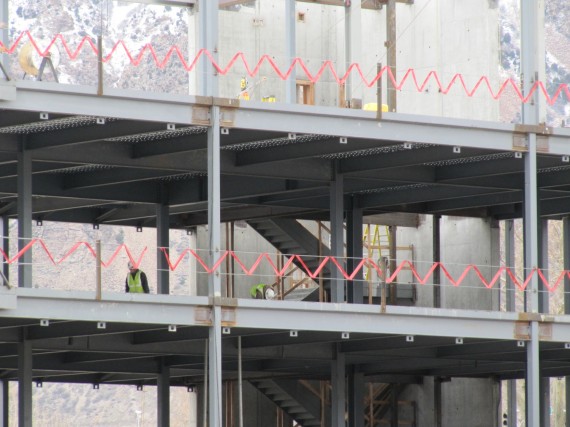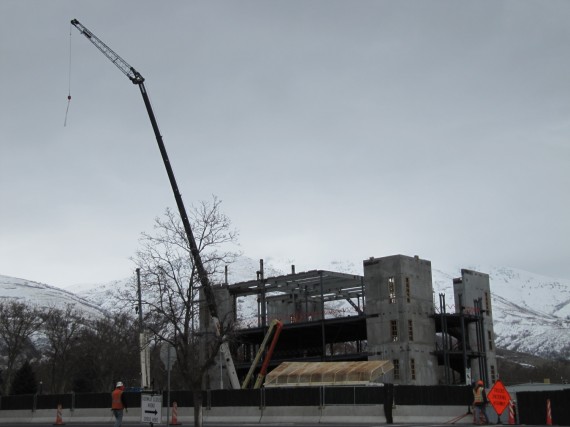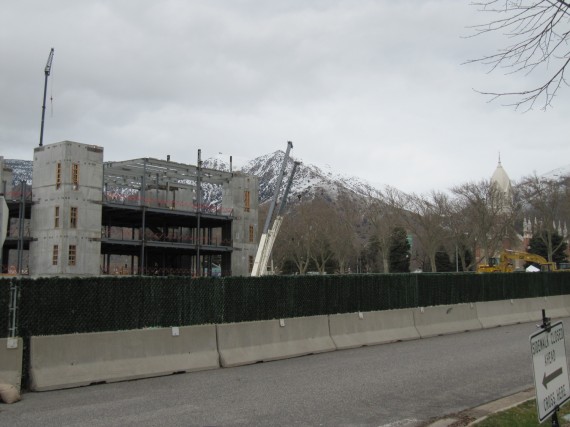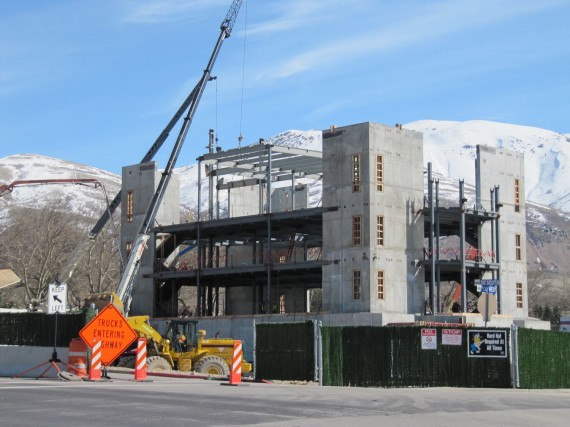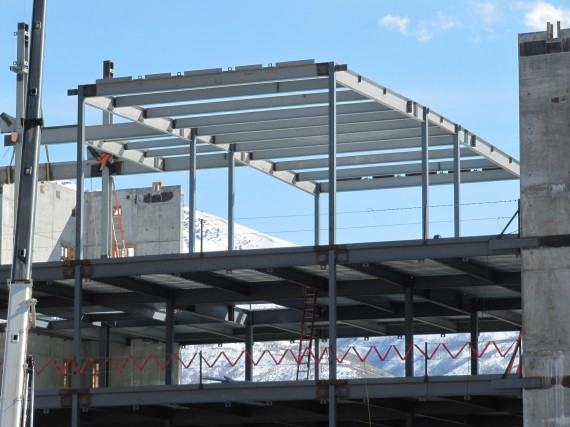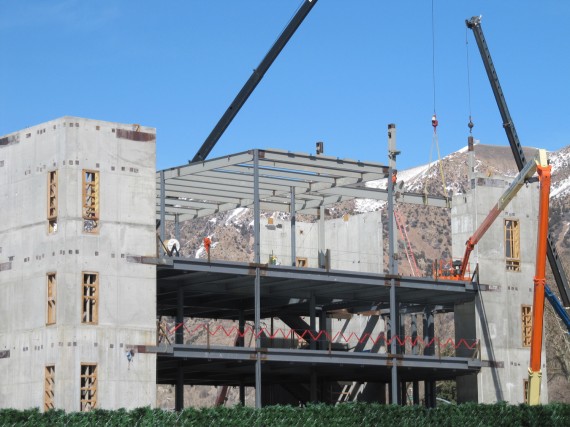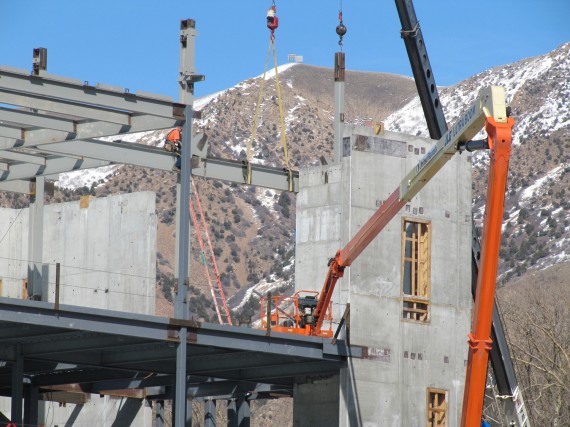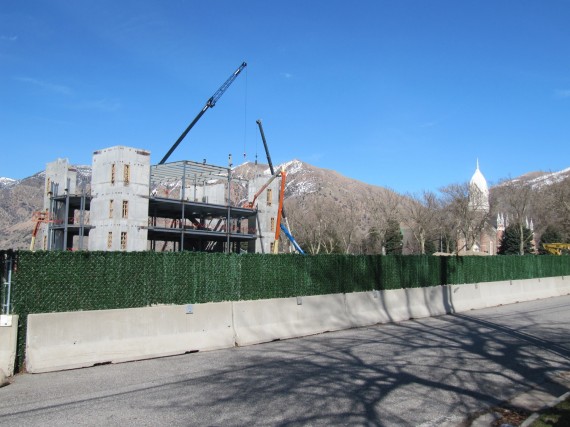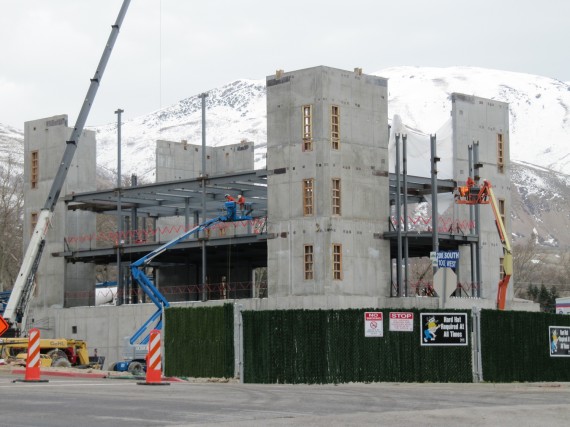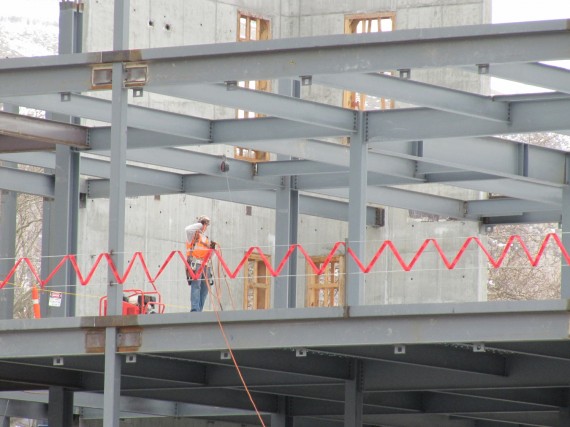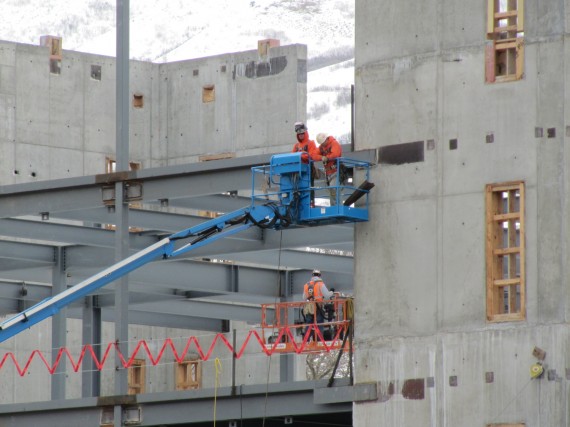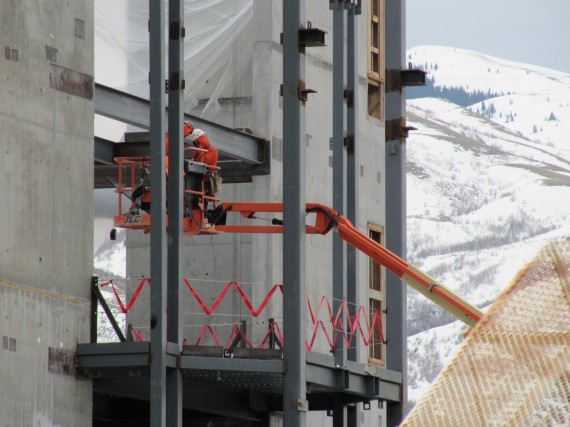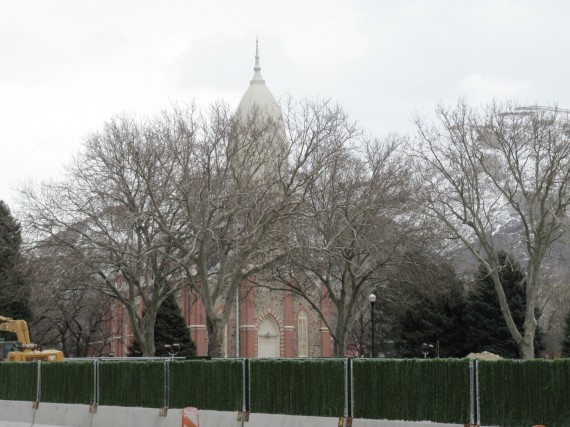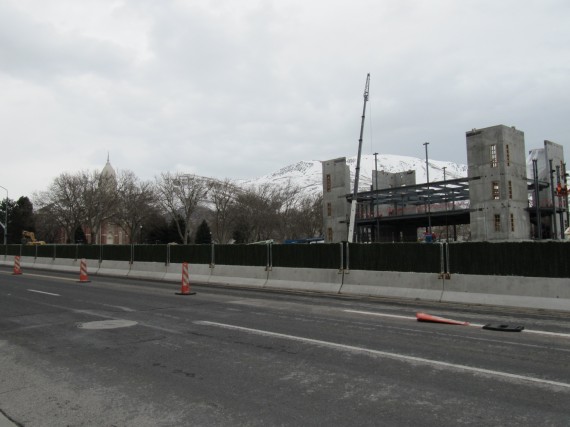On Wednesday we saw a continuation from a week ago of the installation of the exterior panels of the temple. As a tribute to Brigham City and the pioneers, living peach trees will be planted in the grounds. The precast concrete panels have a peach blossom motif that will also be continued for the interior design, etched into the windows, stained glass, and other artwork. You can see the peach blossom motif on the walls in the photographs (click to enlarge).
Brigham City History
The Co-op (continued)
Not all Co-op enterprises were in Brigham City. For example, the dairy was established in Collinston, about 20 miles north of Brigham City. Christian Hansen managed the dairy. His wife Elizabeth, who had made cheese in her native Denmark, supervised the dairy’s cheese production. They asked farmers to give the dairy use of their cows in the summertime in return for cheese and butter. Between 300 and 700 cows were left there each summer.
Brigham City’s Pioneer Days celebration in 1875 featured displays from 29 cooperative departments. The Brigham City Co-op became a model for other Mormon settlements to follow.
The Co-op maintained a high level of success until the late 1870s when a series of disasters occurred. Some of the problems were crop failures due to drought and grasshoppers, destruction of the woolen mill by fire and loss of the saw mill to the federal government. In 1878 a federal tax was levied on local currency used for trade, and $10,200 had to be borrowed to pay the assessment.
The combined losses were so great that after 1878 only the mercantile business remained in operation. In 1884 the federal government returned some of the tax money, and the new Brigham City Merchantile and Manufacturing store was built and opened in 1891. It continued to operate until the Co-op closed down in 1895. (From: Brighamcity.utah.gov)
Photo Credit: Jill Willoughby

